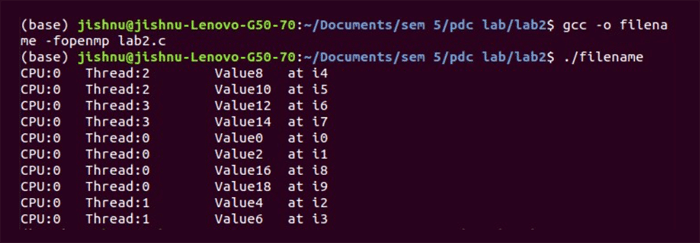OpenMP is a versatile, open source paradigm for parallel programming. Learn how to use it to run processes simultaneously and tackle large data computations.
The large amount of data being generated today requires a lot of computation for analysis. As a result, our computing needs have increased exponentially. Parallel computing has been a topic of wide research for a few years now. It basically means breaking down a large problem into independent small problems and running these simultaneously using multiprocessors, and also communicating through shared memory. The solutions from each of these processors are then combined to give a final result.
OpenMP is one such paradigm used for parallel programming. It is an open source programming interface that supports different kinds of multiprocessing, shared memory, etc, and that too in different programming languages like C++, C, Fortran, and more! It is also compatible with multiple operating systems like Linux, Mac, AIX, Solaris, Windows, and others. It is very scalable and flexible.
Now that we understand what OpenMP is and what it does, let us look into how we can use it.
As a first step, open up a blank text editor and paste the following code:
#include<stdio.h>
#include<omp.h>
int main()
{
#pragma omp parallel
printf(“Hello\n”); }
Here, we first import the required headers, ‘omp.h’ and ‘stdio.h’. In the main code, we write ‘#pragma omp’ with the parallel keyword. This will run the code below it in parallel on different threads.
Now save this text editor with a file name ‘.c’.
The next step is to open up a terminal and type the commands as shown below:
gcc -o filenamec -fopenmp filename.c
We will compile the code that we have written.
Next, we specify to the OS to what extent we want to parallelise our code, i.e., how many threads we want. This is done using the following command:
export OMP_NUM_THREADS = 2
We can now run our compiled code using the following command, using
./filename:
(base) jishnu@jishnu-Lenovo-G50-70:~/Desktop$ gcc -o helloic -fopenmp hello1.c (base) jishnu@jishnu-Lenovo-G50-70:~/Desktop$ ./hello1c Hello Hello (base) jishnu@jishnu-Lenovo-G50-70:~/Desktop$
As you can see, it shows that we printed ‘Hello’ twice, once from each thread! That’s pretty cool, right?
So, now let us see which thread is doing what. Open up the text editor and paste the following code:
#include <omp.h>
#include<stdio.h>
int main (){
int nthreads, tid;
#pragma omp parallel private(tid){
tid = omp_get_thread_num();
printf(“Hello World from thread = %d\n”, tid);
/* Only master thread does this */
if (tid == 0)
{ nthreads = omp_get_num_threads();
printf(“Number of threads = %d\n”, nthreads); } }
}
In this code we have used a few functions that are new.
The omp_get_thread_num(); function helps us to extract the thread number. Then we can give it conditions — if the thread number is this, do this, etc, using if-else conditions. I asked all the threads to print the thread number and one thread to print the number of threads that are there. This is done accurately by the code as seen in the output in Figure 1.

Now let us solve a little more complicated problem. Let us add the corresponding elements of two arrays. This is just the kind of problem we want to solve using parallel programming because each element is added separately. There is no reason for us to add these one by one. So one thread takes up the task of adding one of the corresponding elements at a time. You can assign the threads based on the number of cores your laptop has so that your machine is more efficient.
Let us do this now.
Paste the following code in a text editor:
#include <omp.h>
#define _GNU_SOURCE
#include<stdio.h>
#include <sched.h>
int main ()
{
int a[10]={0,1,2,3,4,5,6,7,8,9};
int b[10]={0,1,2,3,4,5,6,7,8,9}; int sum[10];
int i;
int p=sched_getcpu();
#pragma omp parallel for schedule(static,2)
for (i=0; i < 10; i++)
{
sum[i] = a[i] + b[i];
printf(“CPU:%d\tThread:%d\tValue%d\t at i %d\n”,p,omp_get_thread_num(),sum[i],i);
} }
Here we give ‘status’ and ‘parallel’ as arguments, and a for loop after that. What this does is that each of the iterations is given to a separate thread and then run. In the end the results can be accumulated to get a final result as shown in Figure 2.

That is all; you now have a basic understanding of parallel programming and how to use OpenMP for the same. There are so many more features that OpenMP offers like reduction, sections, and more. I would recommend you go deeper into these as that is when it gets to be more fun. You can also come up with more parallelisation, and make all your processes more efficient.




